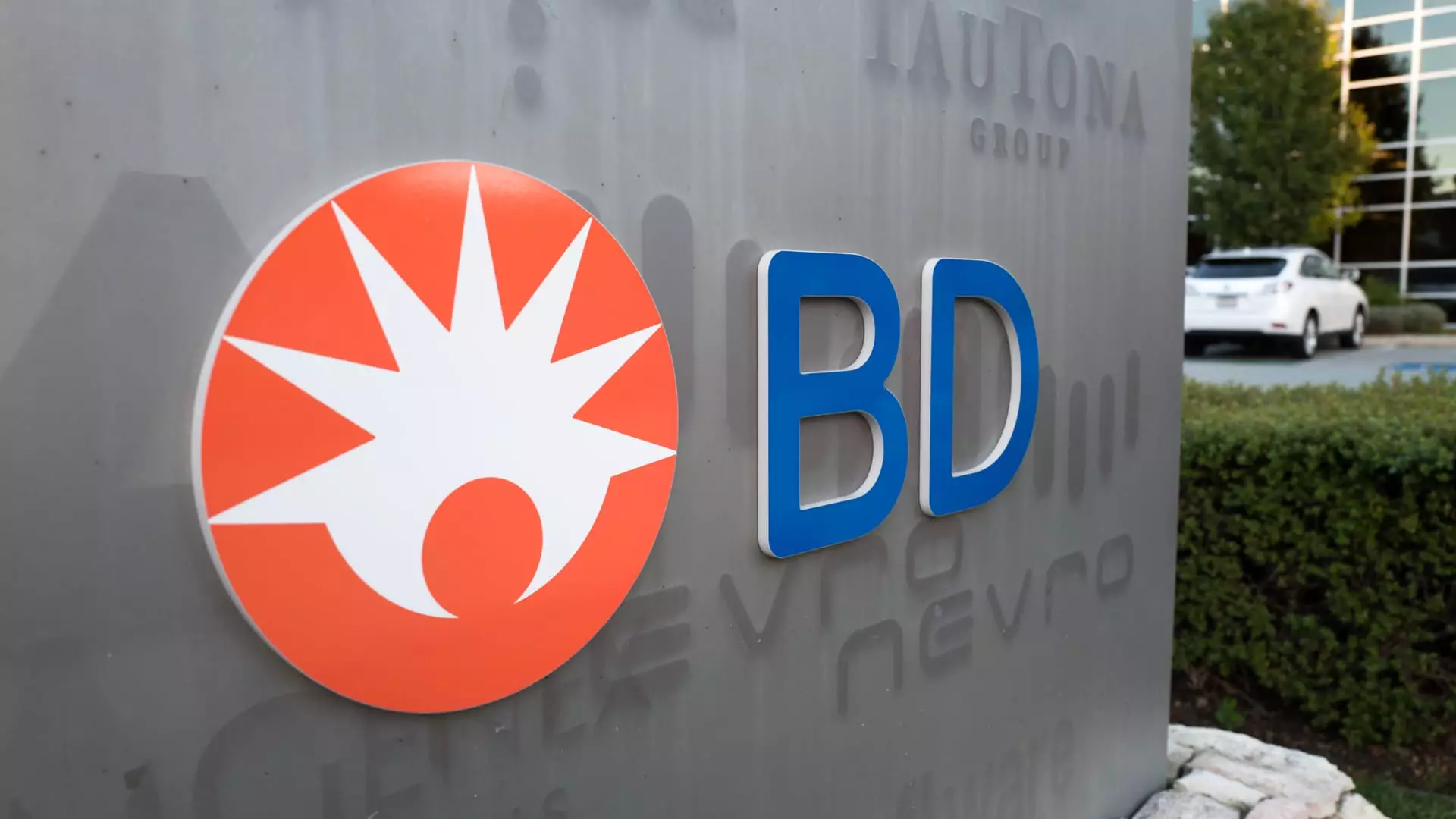Becton Dickinson (BDX) has established itself as a pillar in the global healthcare ecosystem, providing critical medical technologies, supplies, and diagnostic solutions across various sectors. With a market capitalization of approximately $66.65 billion, BDX commands an influential position, catering not just to healthcare institutions, but also to life science researchers and the pharmaceutical industry. The company’s diverse portfolio includes vital products for both medication management and the laboratory diagnostics landscape, showcasing its capability to adapt to evolving market needs.
The emergence of activist investors has become a frequent phenomenon in the corporate sphere, with Starboard Value LP gaining recognition for its successful strategies in nudging companies toward operational efficiency and financial improvement. Notably adept in healthcare scenarios, Starboard has previously engaged with numerous companies, yielding returns of 17.65% in this sector, in stark contrast with the 9.57% average of its Russell 2000 counterparts. Recently, Starboard publicly disclosed its stake in Becton Dickinson, proposing the separation of the company’s life sciences division, a move that could pave the way for increased shareholder value and operational effectiveness.
Becton Dickinson’s business model is compartmentalized into two primary segments: MedTech and Life Sciences. Both segments operate within disparate growth paradigms – MedTech currently outpacing Life Sciences in terms of revenue and EBITDA (Earnings Before Interest, Taxes, Depreciation, and Amortization). This divergence highlights a crucial dilemma: the two segments are on different trajectories, yet remain tethered under a single corporate umbrella. MedTech’s momentum, underpinned by a burgeoning market for infusion pumps and prefilled syringes, contrasts sharply with the Life Sciences division, which battles slower growth.
Starboard’s argument rests on the premise that separating these segments would enable each to flourish independently. By disentangling the businesses, MedTech could benefit from a higher valuation multiple attributable to its growth potential, while Life Sciences could leverage its market stability and competitive landscape to command a premium. As it stands, BDX operates at a valuation closer to its underperforming division, a situation ripe for correction.
A potential spinoff or sale of the Life Sciences unit poses an avenue for considerable value creation. Financial analyses suggest that the MedTech division could sustain valuations between 13x to 14x EBITDA post-separation. Conversely, the Life Sciences division, with its lower cyclicality and higher demand resilience, might achieve multiples exceeding 20x. With these projections, the aggregate value of Becton Dickinson could ascend above $110 billion, providing a significant windfall for shareholders.
The proposed separation extends beyond mere financial tinkering; it symbolizes a strategic pivot, enabling management teams to focus on their respective divisions’ strengths. Such a structural reorganization fosters an environment for improved efficiency, resource allocation, and management motivation—key ingredients for optimizing profits. The attractiveness of each business would likely expand the investor base as well, drawing in shareholders who prefer pure-play investments in MedTech or Life Sciences.
While the separation strategy appears attractive, potential obstacles lurk on the horizon. A report suggests that the Life Sciences division could achieve a $30 billion valuation, shy of the anticipated 20x EBITDA multiple, hinting at complexities in aligning business synergies. Management may choose to retain certain aspects of Life Sciences that complement MedTech, complicating the structural overhaul.
Moreover, Starboard’s intervention reflects a proactive stance rather than a reactive one, underscoring an atmosphere of recognition within Becton Dickinson’s leadership regarding the inherent benefits of separation. The board’s openness to strategic changes speaks volumes about the company’s potential adaptability to investor sentiment and operational necessities.
Becton Dickinson stands at a critical juncture propelled by an activist investor’s strategic insights and the internal reassessment of its business structure. As pressure mounts to optimize its portfolio, the proposed separation of MedTech and Life Sciences represents not only a path to increase shareholder value but an opportunity to revitalize each segment’s core focus, drive efficiencies, and enhance market responsiveness. Navigating this transformation will require careful consideration of potential synergies retained and the financial realities each division faces. If executed effectively, this strategic repositioning could mark a new chapter of growth and success for Becton Dickinson, paving the way for improved stakeholder outcomes.

